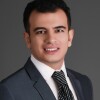Another curious job profile that we didn't know existed in oil and gas came from one of our own The Way Ahead Discover a Career section editors—Mohamed Mehana. In this interview, Mehana describes his work profile and some curious insights working at Los Alamos National Laboratories (LANL). With LANL being a highly coveted and respected national security lab, it was exciting for us to interview Mehana and to know his work.
–Aman Srivastava, Leyla Ramirez, and Umema Bohari, TWA Editors, Discover a Career
Background
Since the US government started investing in scientific research around World War II, US national labs have served as leading research and innovation centers. The US Department of Energy has 17 national labs across the US, equipped with cutting-edge technology and world-renowned scientists that address complex challenges ranging from climate change to national security.
Energy security and independence are pillars of national security. With the shale revolution redefining the energy landscape in the world, tackling the inefficiency of developing shale resources has become a significant target of national labs to ensure energy independence.
Shale formations account for the majority of US hydrocarbon production and both private and public sectors are interested in developing a better understanding of the fluid behavior in these formations for efficient utilization of the available resources. Consequently, numerous oil and gas research centers and national labs are investing in developing new techniques and tools to efficiently manage these resources.
Shale reservoirs’ unique characteristics challenge our understanding of fluid flow in porous media and render our experience with conventional reservoirs useless. A new set of experimental and modeling techniques is needed to study these reservoirs.
While widely underutilized in petroleum engineering, molecular simulation offers a physics-based approach capable of revealing the mysteries of shale formations. The scarcity and challenging nature of nanoscale experiments require molecular simulations to augment experimental observations. However, the computational intensity of molecular modeling requires an efficient approach to upscale the molecular insights to continuum simulations and field operations. To this end, machine learning has filled the gap by providing efficient scale-bridging workflows.
Introduction to Mohamed Mehana
I am a research scientist at the Computational Earth Science Group, LANL. Before Los Alamos, I completed my PhD in petroleum engineering at the University of Oklahoma, working on the molecular modeling of subsurface phenomena. I currently work on projects related to the confinement effects on fluid properties, integrating computational, experimental, and machine learning approaches. My background, which integrates theoretical techniques, machine learning, and field applications, prepares me to tackle this research area at LANL.
Mehana's research work: Google Scholar
How did you stumble upon this job as a career opportunity?
As a graduate student, I developed a love for research and knew that a position in the private sector wouldn’t allow me the flexibility to research. I surfed the web for positions and found that several national labs posted research-based positions that fit my skills and expertise. I applied and interviewed at three national labs and decided to start my career with Los Alamos.
What are your key roles and responsibilities in this position?
I work on a multitude of projects that serve US national security by ensuring energy independence and environmental sustainability. To achieve this goal, I use several modeling approaches to advance our understanding of subsurface resources and leverage machine learning capabilities to accelerate high-fidelity numerical simulation and develop scale-bridging and uncertainty quantification workflows. Applications include multiscale modeling of shale reservoirs, geological storage of carbon dioxide, and geothermal exploration. My LANL projects are funded through the Laboratory Directed Research and Development program at Los Alamos. I am working and collaborating with world-renowned scientists.

How did you perceive this career opportunity before joining? What were the points that attracted you, and what scared you?
I had mixed feelings. Possible career trajectories at national labs weren’t clear to me at the time, and northern New Mexico was not a familiar destination to petroleum engineering graduates. The main attractions were the quality and innovation of Los Alamos’ research opportunities and the ability to work with world-renowned scientists. My main concerns were the location and life outside the lab. The laboratory is in a small town in the mountains. However, I have grown to enjoy the community and outdoor activities like mountain biking, skiing, and rock climbing.
Do you think you can use your full potential in this job? What are the critical challenges that you like resolving here?
Yes, Los Alamos provides a well-structured working environment where junior scientists are well mentored and trained by senior scientists. In addition, it has numerous internal funding channels for junior scientists to gain independence and establish their careers. I interact and work with scientists on cutting-edge projects in an environment that encourages collaboration and innovation.
How can young professionals (YPs) prepare themselves for this kind of career path? What skill sets are required apart from traditional petroleum engineering knowledge?
National labs are always looking for highly motivated and high-achieving candidates to foster their talents through stimulating projects. As a research and development environment, Los Alamos values peer-reviewed publications and encourages YPs to lead impactful publications at high-profile technical journals. In addition, versatility and scientific curiosity are some of the sought-after features in Los Alamo's applicants. Although graduate students are trained to be technical experts in a narrow area of research, their interpersonal skills of persistence and scientific integrity are usually transferable to other research areas. Apart from the traditional petroleum engineering knowledge, I would highly suggest teamwork as a skill to be developed. Graduate students can sometimes isolate themselves, only communicating with their advisors. However, the interdisciplinary nature of research projects at Los Alamos requires collaboration with team members.
Where can they find more useful information or opportunities for such a field?
Each national lab has a career webpage where they post their openings. They also advertise their openings in technical conferences and meetings. Therefore, it might be good to attend talks presented by their staff and stop by their booth. It is worth noting that the hiring process usually involves multiple interviews and background checks, so it can be a lengthy process.
Is this opportunity only applicable to those with oil and gas related college degrees or to other disciplines as well?
As one of the US national labs, Los Alamos has its own mission, which determines its research agenda and, consequently, its workforce. The lab is one of the National Nuclear Security Administration labs where much of the technical workforce comes from material science, physics, engineering, and chemistry majors. However, energy security and environmental sustainability have become lab priorities. Therefore, petroleum engineering graduates have been recruited to multiple positions across the lab. Los Alamos is currently experiencing rapid growth and is expecting to hire about 1,000 people in 2021.
How do you envision this career may grow in the future for YPs?
Before I joined, I only knew one scientist with a petroleum engineering background at the laboratory. However, currently, our team has more than five scientists and postdocs. In addition, our division hosts multiple summer interns with a petroleum engineering background or presently working on their graduate degrees in petroleum engineering departments. The laboratory’s research agenda is updated frequently to reflect the current mission. However, I think petroleum engineering students will always be competitive as long as they are open to learning and developing transferable skills.


